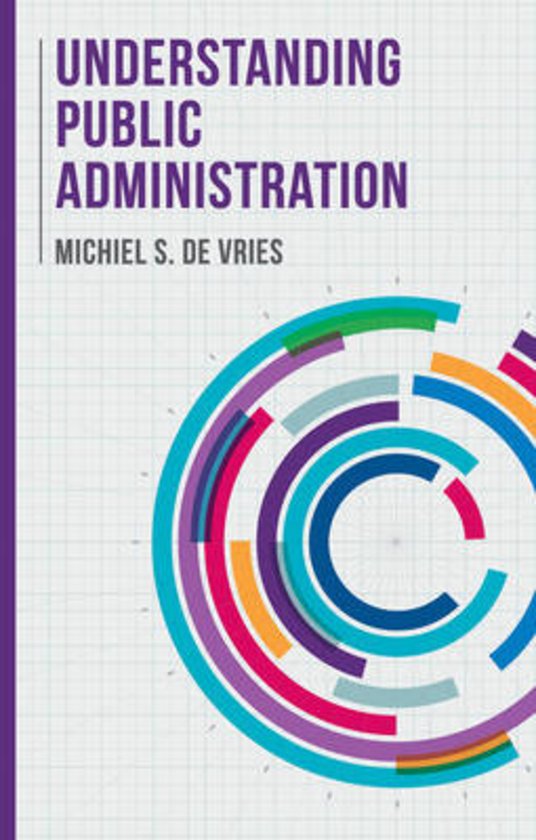Introduction to public management
Lecture 01: [02-09-
2020]
Understanding Public administration
What is public administration:
Three different meanings of public administration:
Government: Consists out of the executive and totality of state service.
An academic discipline: Scholars researching how a government works.
Study programme: Prepares students for a career in government (national,
regional or local) (international) non-profit organizations (UN, EU, NGO etc.),
consultancy firms (advising governments).
The evolution of public administration:
- Traditional public administration (Bureaucracy for scale and efficiency)
- New public management (private sector can teach the public sector)
- New public governance (complexity of reality requires diverse solutions)
Worldwide evolution of public administration in urban studies:
What are the different sister disciplines of Public administration?
Political science, sociology, economics, law and management.
Herbert Simon: developed the theory on bounded rationality. He challenged the
basic economic assumption that self-interested actors will always try to make
optimal choices in terms of the costs and benefits for themselves.
Elinor Ostrom won the Nobel prize for work on collective action in the
management of common pool resources.
,Simon and Ostrom are two examples of the contribution of public administration
to the understanding of human and organizational behavior.
In the book chapter 1: “Public administration is the discipline that studies how the
public sector serves the public good through developing and implementing public
policies and what is needed to conduct this business in an efficient, effective,
legitimate and rational way, in order to optimize serving the public good. “
Public administration is distinct in that it not only attempts to understand, but
also uses this knowledge to improve public administration. As such, it is also an
applied discipline.
Lecture 02 [09-09-
2020]
Why do governments exist and Why study them?
How government relates to the state
State and Government:
State (or nation): State is broader than a government. It consists of a
population, a territory, a government and sovereignty. It is typically a nation. In
practice, a state can refer to the regional level of government in some nations.
(USA, Germany and Australia). Better to refer to a nation as a nation-state.
The state has four elements:
1. Territory: land, borders
2. Population: inhabitants of the nation
3. Sovereignty: Having actual authority over territory and population. Being
legally recognized as such by other states.
4. Government: The totality of institutions in a state which are authorized to
allocate collective binding values and services, such as laws, taxes, subsidies and
the use of violence. (You could say this binds people to rules. They can choose to
not follow them but there are consequences.)
, Regime types:
Regimes = form of government. There are many ways of how governments can
be shaped.
1. palace: all power concentrated in 1 person, who is not accountable to anyone
or to the law.
2. Forum (democracy): Decisions are openly discussed. Decision-makers are
accountable to the population.
3. Temple (theocracy): country run by religious leaders who are accountable to
God and to divine rules.
4. Club: government is dominated by a group with a one-sided interest.
Exclusive: military, rule by one social class. (nobility, merchant elite), one party
state (communist/fascist)
In practice, in most countries there is a mixture of regimes (think about The
Netherlands).
Why people transfer authority to government
The possible explanations could be:
1. Human nature: Humans naturally herd together and organize themselves.
2. Collective action requires organization, and organization requires leadership.
3. Evolution of civilization: from hunters-gatherers to agriculturalists to cities
to states.
4. Religious conviction: rainmaker-kings; king as the sword of god on earth.
5. Historical perspective: Force, conquest, (de)colonization.
Public goods and the logic of collective action:
Governments exist to produce public goods. Public goods are goods that are not
private.
Private goods:
Private goods have the following two characteristics:
Private goods are excludable and rivalrous. This means when one person pays
for them, others cannot consume them and if one person consumes them, they
will no more be available to someone else.
Public goods:






